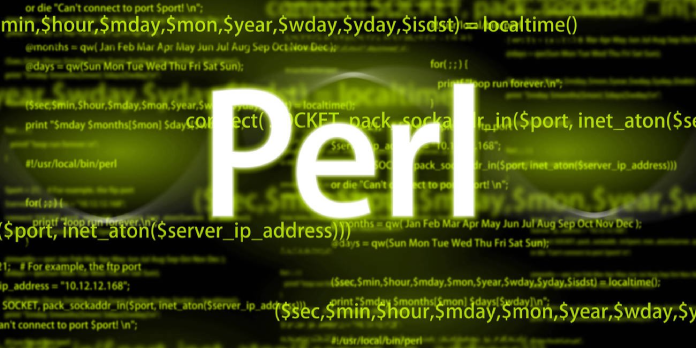Here we can see, “Proper Shell Scripting on Windows Servers with Perl”
- Shell scripting is a must-have skill for every professional IT administrator in charge of a server. Scripting is essential for automating backups, examining logs, and monitoring server performance and load.
- Shell scripting on Windows is a pain.
- Fact: Shell scripting on Linux and other *nix operating systems is extremely powerful, well-documented, and simple.
Most people look at these three facts and immediately jump to the wrong conclusion: you can’t adequately manage a Windows server since it’s intrinsically poor in shell scripting.
But this isn’t the case Because here’s something else to consider:
Perl scripts can be used to replace 99 percent of all shell scripting requirements.
Another interesting fact:
Perl (unlike PHP) operates flawlessly (indeed, it’s fantastic) on Windows.
With these two facts in mind, you can now draw the following conclusion: Shell scripting on Windows does not have to be difficult, restricting, or inferior to Linux in any way.
Perl is a fantastic programming language. The Perl modules are a collection of pluggable scripts that you can simply reference and run. With the online Perl community and millions of Perl-scripting samples all over the internet, it’s a well-documented language that no sysadmin can avoid using.
Perl was designed specifically for situations like this. It’s the language of choice for writing fast scripts that get the job done quickly, easily, and painlessly. For the most part, a Perl script written for Linux will run on Windows as well, with little to no tweaking required.
Manage (prune, grep, or sort) log files, backup and FTP or email database server dumps, plan webserver maintenance, and more are all simple tasks using Perl.
Shell scripting in Perl is even easier than shell scripting in Bash, thanks to the large libraries that make even the most monotonous and time-consuming jobs simple. Composing an email with your MySQL dumps as a GZIP’d attachment takes only 6 statements (we’re not counting lines because this is Perl).
The Task Scheduler makes it simple to schedule Perl programs to run at regular intervals, but that’s about all you’ll ever need to do with Windows.
A fast Google search for “Perl server administration scripts” yields millions of results. Choose your weapon, hack it, and flee.
Here’s a 5-step method on using Perl scripts to manage your server:
- Perl for Windows is available for download and installation (ActivePerl, free).
- You don’t need anything more than the basic syntax for shell scripting; classes and functions are utterly superfluous — it’s far too simple to be termed programming! Read the Perl FAQs to familiarize yourself with the syntax. It’s not overly difficult, and it’s fairly easy to code in (though reading other people’s work is a different problem).
- Create a Perl script. Make use of a proper text editor, such as Notepad++.
- Run it from the command line to ensure it does what you want it to. Step 3 can be repeated as needed.
- In the Control Panel, go to Scheduled Tasks and create a new task to run your Perl script as often as you want.
Sure, it won’t be as simple as it appears, and it’ll probably take you a day or so to get from zero to cranking your first Perl-based shell script, but you’ll soon be doing it blindfolded and with both hands behind your back. It’ll also only be one line long!
The most important thing to remember is that you don’t have to be (or learn to be) a programmer to shell script in Perl.
Assume your Perl script is a batch file (ugh!). The Perl processor will run it very straightforwardly from top to bottom. You don’t require classes, data structures, or object orientation, and you don’t have to use variables at all if you don’t want to! Place one task/command per line, add loops as needed, and test frequently.
In the weeks and months ahead, we’ll provide more information, guidelines, sample shell scripts, and how-tos on Perl-based shell scripting. If you know how to shell script in Perl on Windows, you’ll have no trouble doing it on Linux or OS X. You can do anything if you know how to shell script in Perl! Don’t quit up just because it requires you to learn something new; this is an investment that will pay off for the rest of your life.
Conclusion
I hope you found this information helpful. Please fill out the form below if you have any questions or comments.
User Questions
1. Perl or shell scripting: which is better?
A shell interpreter is installed on every computer with a command line. Shell scripts are more portable because most computers come with a bash shell. Perl must be installed because it is not included in all operating systems. The Perl API is easier to use in most common applications, more readable, and faster than shell scripts.
2. What is the best way to execute Perl interactively?
Without using the Perl debugger, the interactive mode in Perl can be run directly from the command line. The following command can be used to accomplish this: perl -e Code statement; This statement uses the -e flag to avoid creating a script and allows the code to run without the debugger on the command line.
3. In Windows, where is the Perl path?
If you’re not sure where you installed Perl (and it’s not in the normal C:perlbin), go to the Start menu, locate the ActiveState Perl folder, right-click on the “Perl Package Manager” icon, and select “Properties” from the right-click menu.
4. CMV: if I know Perl or Python, I don’t need to learn bash. – Reddit
CMV: if I know Perl or Python, I don’t need to learn bash. from linux
5. Automatization is there a good moment to start using Perl/Python?
Automatization is there a good moment to start using Perl/Python? from linuxadmin



